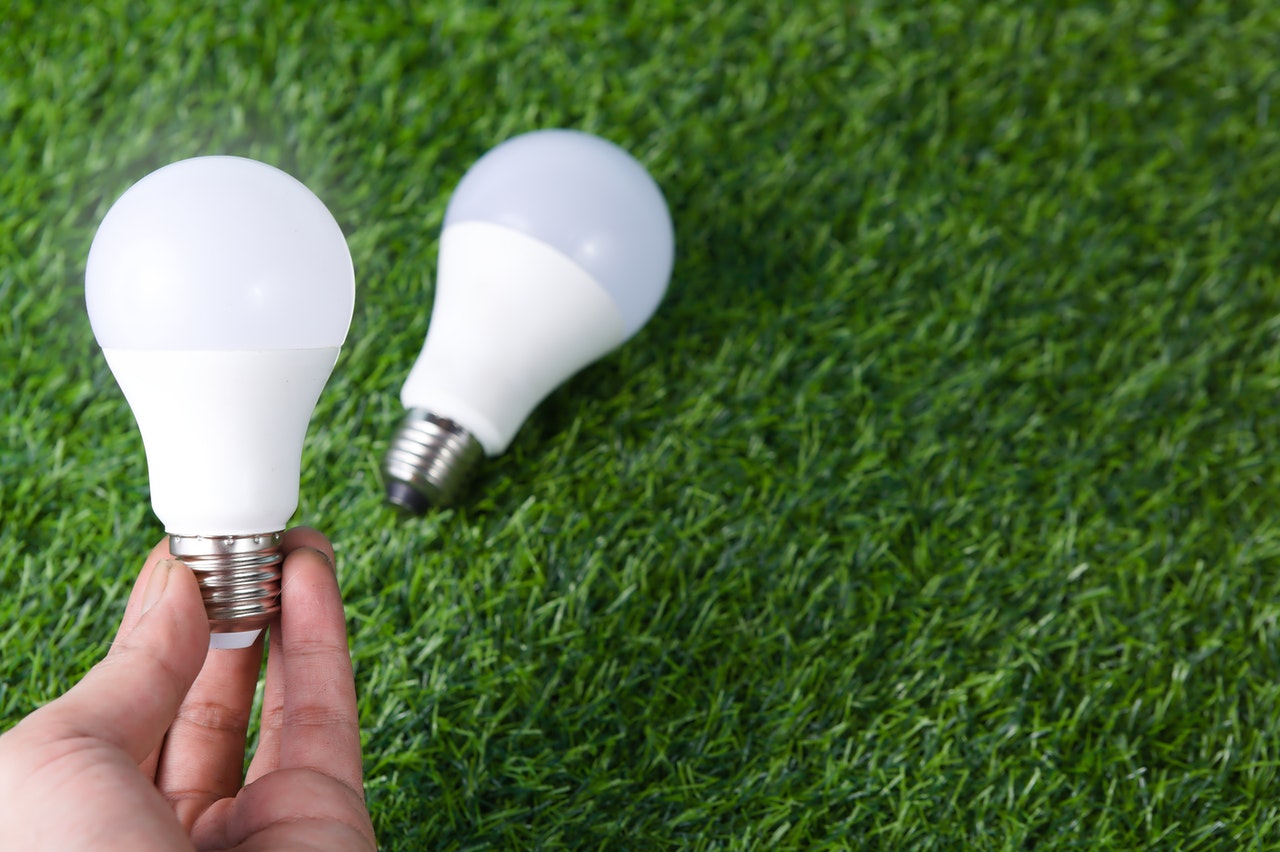
Don't you hate it when it's the middle of the night, and you're a few pages away from finishing your latest murder-mystery novel when a blown light bulb suddenly ruins your chance of finding out who done it? If your bedside table lamp uses a regular light, you might want to know if you can replace it with a different type of light.
When you head on over to your favorite home improvement store the next day, don't reach for the first light bulb you see. Now is the perfect opportunity to make the switch from a standard incandescent bulb to an energy-efficient LED bulb.
Continue on to read our light comparison guide and discover the top differences between LED lights and standard bulbs.
A study by the University of Michigan Center for Sustainable Systems took a look at how replacing regular lights with LED lights helped cut residential energy costs and greenhouse gas emissions. The researchers said, "lamps with higher usage rates should be upgraded first and more frequently to achieve the highest possible cost, energy, and emission savings."
The top reasons to consider making the switch from regular lighting to LED lighting include:
Due to their energy inefficiency, certain incandescent and halogen light bulbs are starting to be phased out or even attempted to be banned in certain states. LED lights continue to get cheaper every year and, when you factor in their long lifespan, the cost is comparable to regular bulbs.
Have you ever wondered if an LED light bulb is the same as a regular light bulb? Amazingly, Energy Star mentions how "LED lighting products produce light up to 90% more efficiently" when compared to standard household incandescent light bulbs.
The four main types of light bulbs used in residential homes include:
Incandescent light bulbs are the standard light bulbs used in most people's homes. They are easily recognizable with their white, or sometimes clear, glass bulb surrounding a tungsten lighting filament. Regular light bulbs have been around since the mid-1800s and work by heating the filament with electricity until it begins to glow brightly.
Incandescent bulbs aren't very efficient, produce a lot of heat, and burn out relatively quickly. The average lifespan of regular incandescent light bulbs is only about 1,000 hours.
Halogen light bulbs are nothing more than an enhanced version of an incandescent bulb. Like regular lights, halogens start with a clear glass bulb enclosing a tungsten lighting filament. However, the tungsten filament from a halogen bulb is also surrounded by a transparent housing filled with an inert gas like iodine or bromine.
When you turn on a halogen light fixture, the gas ignites the filament producing a hotter yet brighter light than a standard bulb. The average lifespan of halogen bulbs is about 2,000 hours.
Compact fluorescent lamps come in many shapes and sizes, including the ubiquitous spiral tube seen at many home improvement centers. They are kind of like a miniature overhead fluorescent lighting tube housed in a compact lighting fixture. CFL light tubes contain argon gas and a trace amount of mercury. When an electric current travels through the tube, ultraviolet light is generated, causing the interior fluorescent coating to phosphor or light up.
CFL bulbs come in different base types, including a screw-in base that lets you use them in any standard lighting fixture that fits a regular incandescent or halogen bulb. The average lifespan of a CFL bulb is about 12,000 hours, and they use much less electricity - about one-fifth to one-third less than regular incandescent bulbs.
When you turn on an LED light, electricity passes through a small microchip, AKA the light-emitting diode, causing it to glow brightly. A few reasons for the growing popularity of LED lights are that they are cooler to the touch, use much less energy, and last up to 25 times longer than standard light bulbs.
People used to worry that replacing their entire household with LED bulbs was expensive. But you should never compare the cost of an inefficient regular bulb with an energy-efficient LED bulb. With the average lifespan of an LED bulb being around 25,000 hours, this means your bulbs will last much, MUCH longer compared to standard lighting options.
This is a win-win lighting situation for your home, your wallet, and the environment.
If you're replacing all your lighting fixtures with LED bulbs, you're probably wondering how to dispose of your old bulbs. Of course, you don't want to simply throw them in the trash, as broken bits of glass are certainly a safety hazard.
Many recycling facilities won't accept light bulbs placed in recycling bins, but you can dispose of incandescent, halogen bulbs in your regular trash can. It's a good idea to wrap the bulbs with paper towels or place them in a ziplock bag or small cardboard box before disposing them. That way, the sharp pieces of glass are safely contained if any of the bulbs break.
Since CFLs contain a trace amount of toxic mercury, this makes disposal a more difficult proposition. You may have to take your CFL bulbs to a facility that accepts household hazardous waste or contact your local home improvement store to ask if they have a CFL drop-off site near you.
We think you'll agree that, after reading our light comparison guide, there really is no reason to continue using inefficient incandescent lightbulbs around your home. From lowering energy costs to reducing carbon dioxide emissions, LED bulbs are the lighting of the future.
Power the Smart Way with Atlantic Energy - reach out to us today and discover how we can help make your home smarter. When you choose us as your residential energy provider, you will receive our Smart Home Bundle, including ten energy-efficient LED bulbs and 3 Smart Wi-Fi enabled LED bulbs.